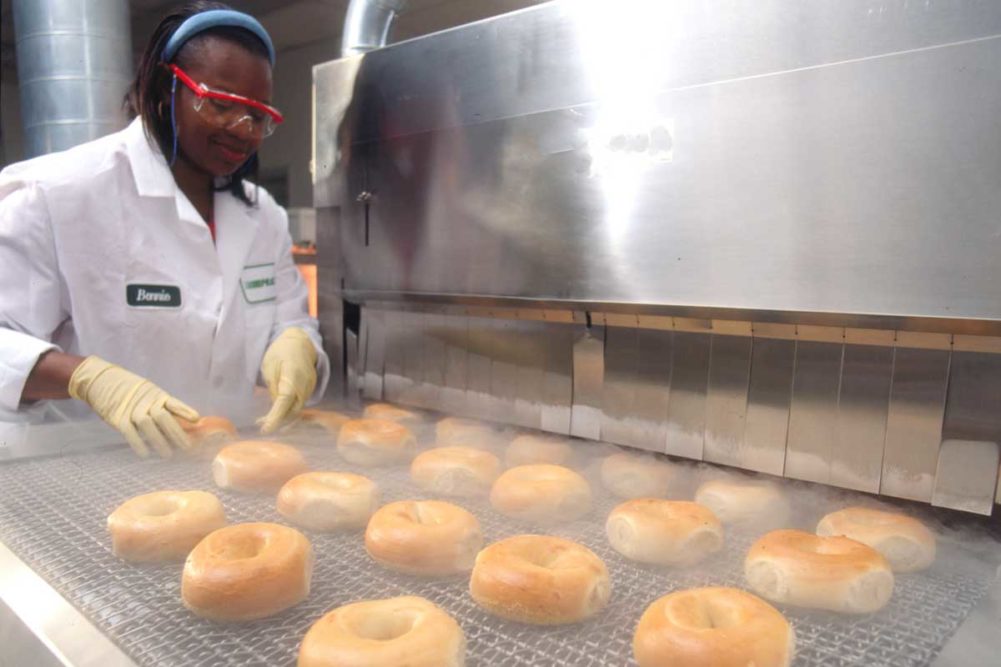With families spending more time together in their homes, consumers rediscovered the freezer case as a go-to option for conveniently bringing the taste of restaurant quality into the home.
However, the overnight surge in popularity of oven-fresh bread and late-night pizzas — not to mention the comfort of a warm cookie after a long day of home schooling — prompted many frozen baked goods manufacturers to kick their operations into overdrive to meet the heightened demand for retail-ready products.
In the short run, it meant running 24/7 as production lines and freezer throughput maxed out on capacity.
In the midterm, eliminating the bottleneck in freezing requires exploring options from wider belting and expanded spiral or tunnel systems to engineering greater air velocity for increasing a system’s volume.
Overall, advances in the freezing process have come a long way.
“Years ago, an OEM would design a conveyor system then put a belt on it at the end,” said David Bogle, lead engineer, spiral platforms, Intralox. “Companies would design a belt and hope it worked on the OEM’s conveyor. These days, both parties are working together to give the end user the most optimal system.”
Peak performance, he added, now relies on product quality, consistency and efficiency that’s tailored to a bakery’s product line.
“There have been many advances in technology that could enable faster freeze times, faster cleaning times, less product weight loss, product marking and more,” Mr. Bogle said. “Intralox participates heavily in the equipment design to make sure a customer gets the ideal system and life expectancy for their investment. Intralox has also begun a service to help optimize the air flow and cooling of existing and new systems.”
Freezing requires research, especially with larger baked foods with dozens of air pockets that act as insulation and make these more difficult to freeze.
Breads and cakes effectively insulate themselves from rapid changes in internal temperature,” observed Chris Johnson, business development director, Praxair, Inc., a Linde company. “Increasing or decreasing the diameter or thickness of a baked product, even slightly, can have a dramatic impact on the time required to freeze.”
Overall, he added, baked items require a consistent temperature before entering an efficient freezer to achieve maximum quality. However, some filled products like empanadas present freezing challenges.
“If they’re frozen too quickly, they may crack due to the differing contraction rate between the dough and the filling,” Mr. Johnson explained. “Freezing too slowly can allow for moisture migration between the filling and the dough and/or ice crystal growth within the dough that damages the texture.”
Bakers should audit the freezing process through in-plant testing or in a food lab to understand the specific heat modes and to determine whether to use mechanical chilling, nitrogen or carbon dioxide (CO2). Using the incorrect freezing method, for instance, might kill the yeast and turn frozen dough into inert hockey pucks.
“Yeast-raised products have some of the lowest stabilities of any frozen foods, and along with the yeast dying, you also have the issue of your gluten structure weakening,” noted Lars Soderman, sales director, Scanico, a Middleby Bakery company. “A bread baked from a dough that is frozen will most likely not have the volume a fresh-dough bread would have. Even though you have increased your yeast, the gluten structure will still be weaker and will not allow the bread to expand in the way a fresh dough would.”
Over-freezing typically doesn’t cause product damage. Rather, Mr. Johnson said, it just wastes energy. A slow freeze, however, will tend to dehydrate baked goods and result in freezer burn or a dry spot or section on a bread or roll.
“Wet products can lose 3% or more moisture to dehydration if not frozen quickly enough,” he noted. “Freezing as quickly as possible for the selected baked item is important for retaining the desired moisture within the product.”
Meanwhile, freezing pizza poses several unique challenges. For starters, multiple ingredients require different freezing temperatures in one package.
Fortunately, pizzas are relatively thin, making them a good candidate for rapid freezing. “However, pizzas typically have a large, circular footprint,” Mr. Johnson said. “This feature causes pizzas to occupy quite a lot of belt space. So, a relatively quick freeze and lots of belt real estate leads to wide and/or fast conveyor belts leading to large freezers. Freezing mechanically can mean very large spiral freezers. Freezing cryogenically can decrease the equipment size by up to four times.”
Loose toppings are another potential issue when air circulation blows them off the product. Mr. Johnson recommended applying heat to quickly melt some toppings and encourage the loose items to stay in place during freezing. Another tip? Use a quick water mist to secure the toppings.
Moreover, maintaining the pizza shape can present a challenge. To prevent slippage, use paper or corrugated disks to keep the pizzas in place.
“Almost all food conveying systems employ belt speed changes to an advantage,” he observed. “Products too close together? Speed up the belt to increase separation. Many food products simply slip on one belt while the other belt is doing all the work. A fresh pizza crust will deform under these conditions.”
This article is an excerpt from the June 2020 issue of Baking & Snack. To read the entire feature on freezing, click here.




